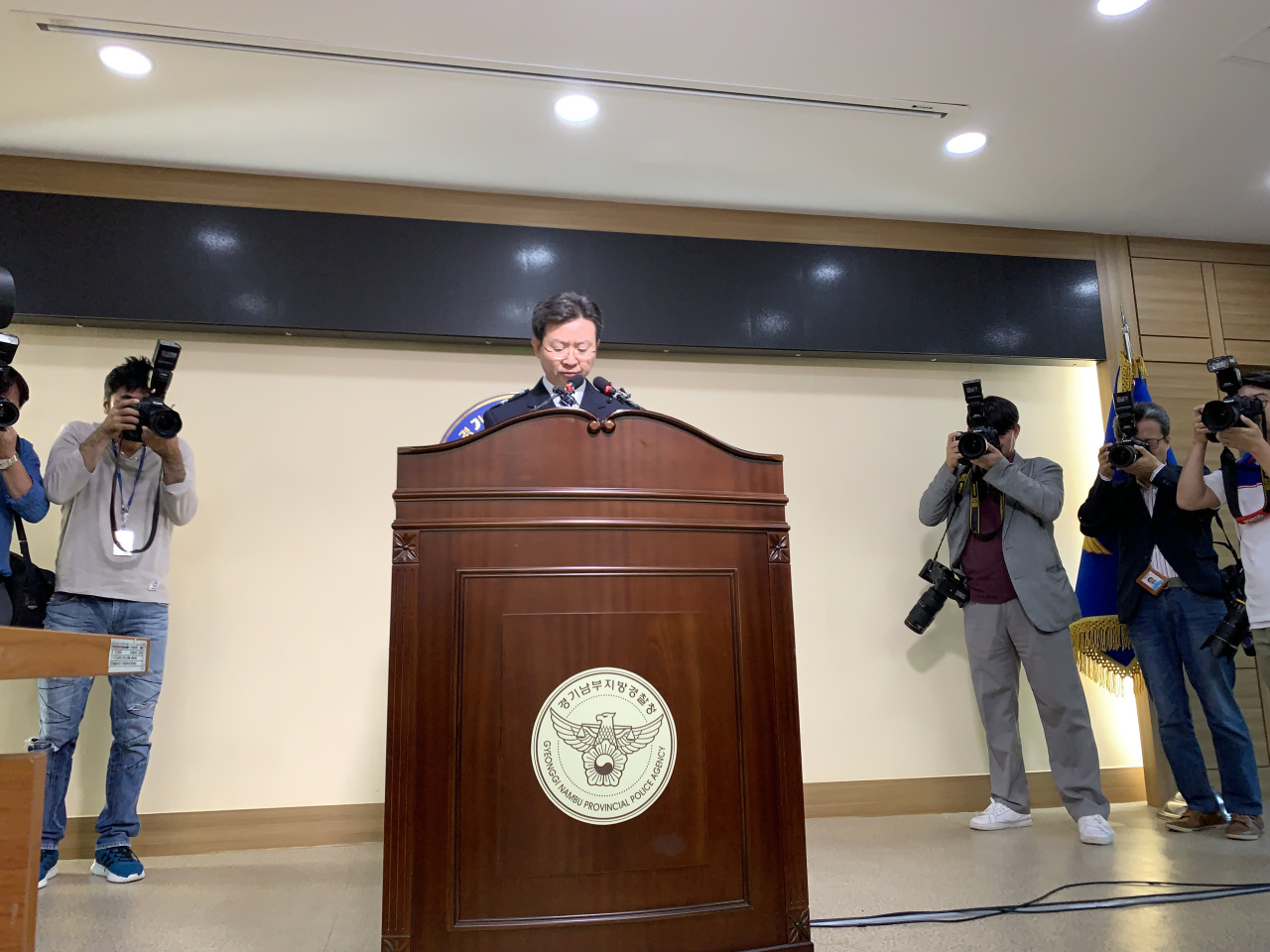Police vow to crack cold case of serial rape-murder from 1980s, after DNA identifies suspect
Police inch closer to solving cold case after 33 years
By Kim ArinPublished : Sept. 19, 2019 - 11:20
Police have vowed to crack a cold case of serial rape and murder from more than 30 years ago, with a prime suspect identified via DNA testing. Police said the suspect, already in jail on another conviction, denied charges in the first round of questioning.
Gyeonggi Nambu Provincial Police Agency said in a press briefing Thursday morning that DNA from the suspect and from at least three of the serial rape-murders were found to match in a forensics analysis.
According to police, a man surnamed Lee, in his 50s, is suspected to have been involved in eight rape-murders spanning 1986 to 1991, in Hwaseong, Gyeonggi Province. A total of 10 rape-murders took place during that period. Two of those cases were copycat killings. The killer in one of the cases has been caught, while the DNA sample from the other copycat case did not match that of Lee.

While police declined to disclose further details regarding the suspect, Busan Prison revealed to the media the suspect is serving a life term there for the rape, murder and body disposal of his sister-in-law in 1994. The prison said detectives from the Gyeonggi agency visited Lee on Wednesday for questioning.
Police, without confirming date and location of the interview, said Lee denied the allegations against him despite DNA matches that linked him to three murders. Media have reported that the three murders were discovered on Jan. 10, 1987, Sept. 7, 1988 and Nov. 15, 1990.
Police said they will consider releasing the identity of the suspect -- if the allegations are confirmed -- in light of the gravity of the crimes.
Ban Ki-soo, superintendent general of Gyeonggi Nambu Provincial Police Agency who is leading the probe, said police reopened the case after a new DNA profiling technique made possible identification of old samples.
On July 15, the cold case team at the police agency filed a request with the National Forensic Service for a test of a DNA sample found on the underwear of two victims collected at the scene of the crimes.
Ban said police have continued to receive reports and conduct analysis on compiled evidence, even though the statute of limitations on the last of the murders expired on April 2, 2006,
Ban said a 57-member team comprising the agency’s detectives, evidence analysts, cold case investigators and legal advisers are currently on the case.
Gyeonggi Nambu Provincial Police Agency Chief Bae Yong-ju said regardless of the possibility of prosecution, police are “charged with the duty to get to the bottom of the truth for victims and their families, and for the people’s right to know.”
Ten women, whose ages ranged from their early teens to those in their 70s, were found killed in the five-year crime spree in the rural city south of Seoul.
The suspect’s identification comes 33 years after the first case emerged on Sept. 15, 1986, with the death of a 71-year-old woman surnamed Lee.
A total of 21,280 men came under suspicion during investigation of the case -- a record number for a single case --, 40,116 of whom underwent fingerprinting.
By Kim Arin (arin@heraldcorp.com)







![[KH Explains] Hyundai's full hybrid edge to pay off amid slow transition to pure EVs](http://res.heraldm.com/phpwas/restmb_idxmake.php?idx=644&simg=/content/image/2024/04/18/20240418050645_0.jpg&u=20240419100350)







![[From the Scene] Monks, Buddhists hail return of remains of Buddhas](http://res.heraldm.com/phpwas/restmb_idxmake.php?idx=652&simg=/content/image/2024/04/19/20240419050617_0.jpg&u=20240419175937)

![[KH Explains] Hyundai's full hybrid edge to pay off amid slow transition to pure EVs](http://res.heraldm.com/phpwas/restmb_idxmake.php?idx=652&simg=/content/image/2024/04/18/20240418050645_0.jpg&u=20240419100350)

![[Today’s K-pop] Illit drops debut single remix](http://res.heraldm.com/phpwas/restmb_idxmake.php?idx=642&simg=/content/image/2024/04/19/20240419050612_0.jpg&u=)